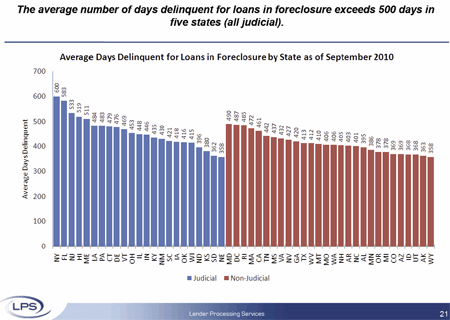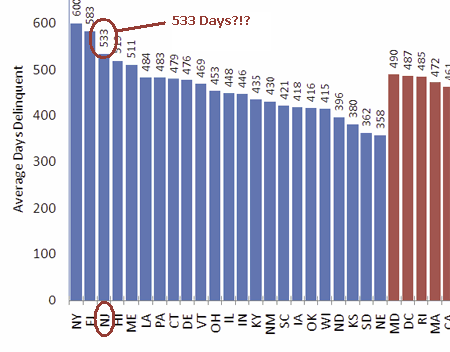Homework for the weekend, compare and contrast the market in 1991 and the market in 2010.
From the NY Times:
Jersey’s ‘Gold Coast’ Losing Its Glitter
By THOMAS J. LUECK
Published: March 24, 1991
THE New Jersey shore of the Hudson River, which emerged in the mid-80’s as a powerful new magnet for high-rise office development, is struggling with high vacancy rates, canceled projects and nagging doubts about the capacity of its roads, parking and public transportation.
No area better symbolized the 80’s real estate boom in the New York region. An 18-mile corridor of gritty piers, derelict warehouses and abandoned railroad yards, the New Jersey riverfront became a patchwork of huge development sites.
It also became the focus of a feisty battle for New York City tenants and the centerpiece of an urban renaissance so sweeping that some began calling the area the “Gold Coast” of New Jersey.
For now, the renaissance has slowed. With 15 million square feet of space — more than half of it built in the last five years — developers on the New Jersey shore are beset by the highest vacancy rates in the New York area.
…
One troubled residential project is Port Liberte, a development that may ultimately include 1,690 town houses and apartments on a series of shorefront canals in Jersey City, just west of the Statue of Liberty. With only 300 of the homes completed, the project’s developer, Paul W. Bucha, president of Port Liberte Partners of Jersey City, ran into severe financial trouble in 1989 and stopped building. One of his major lenders, CityFed Financial Corporation of Somerset, N.J., attributed a loss of $52.7 million to its bad loans to Port Liberte, and its assets were later seized by Federal regulators.
Now, despite widespread reports that Asian investors stand ready to take over the Port Liberte project, its fate is in the hands of the Resolution Trust Corporation, the Federal agency charged with rescuing the nation’s failed thrift institutions.
From the NY Times:
Less Luster on the ‘Gold Coast’
By ANTOINETTE MARTIN
Published: October 29, 2010
IN Hudson County, the once-shining Camelot of New Jersey’s housing market, condominiums are still king. In every month so far this year, 5 to 10 times as many condos as single-family houses were sold.
But that is not to say the picture is shiny for the Gold Coast in general, or condos in particular.
In fact, as of Oct. 1, there was a 15-month inventory of unsold condominiums, just as there was for single-family houses, according to an analysis of sales statistics done by the Otteau Valuation Group of New Brunswick. Translation: If no more units were listed for sale, it would take 15 months to sell those already listed, at the current sales pace.
A six-month inventory is what real estate professionals consider healthy.
In Hoboken the inventory was just over nine months. In Jersey City it had swelled to 17.6 months. In specific Jersey City neighborhoods, the situation varied: a 13-month inventory downtown, where more than 400 condos are for sale; 42 months (three and a half years) for Journal Square, where 200 apartments are listed and sales are very sparse.
Elsewhere, in three communities where the massive Port Imperial development is ensconced along the riverfront — Weehawken, West New York and Guttenberg — inventory levels ranged from 19 months to 2 years.
Inventories grew despite widespread cuts in price for both new construction and resales, as any home shopper might glean from all the “reduced” notices on Web sites.
…
One of the Jersey City market’s big problems is that new projects keep opening there all the time. There were hundreds of units under construction three years ago as the housing market crumpled. Developers found ways to finish the work, but found the appetite for condos had been sated. Total sales did increase this year, but inventory levels increased much more.
In Hoboken, where sales have been flat since midsummer, newer buildings are still offering buyers a free period on service contracts. Some, like the Hudson Teacomplex, have added to the array of services — for instance, custom renovations — offered when a unit turns over.
At older buildings, and those a few blocks farther from the waterfront, price reductions are still considerable. An 830-square-foot renovated corner unit on First Street with a large deck was listed at $449,000 in June, reduced in August, and reduced further in October, to $408,000.
A somewhat larger loft unit on Newark Street, also renovated, with one and a half baths and a private roof deck, sold for $320,000 in 2003 and was offered for $510,000 last spring. In October the price was cut to $455,000.


